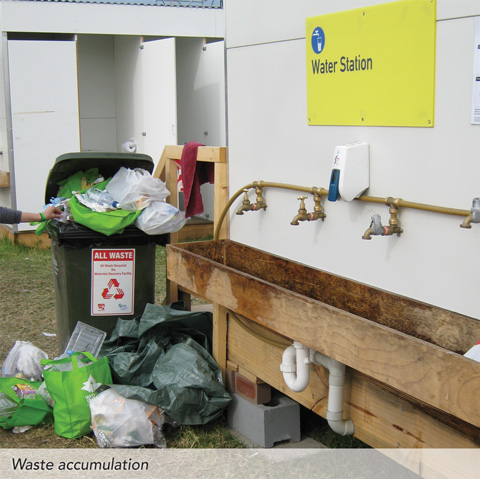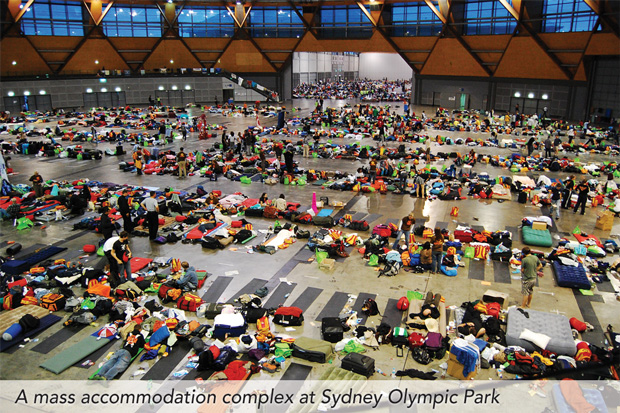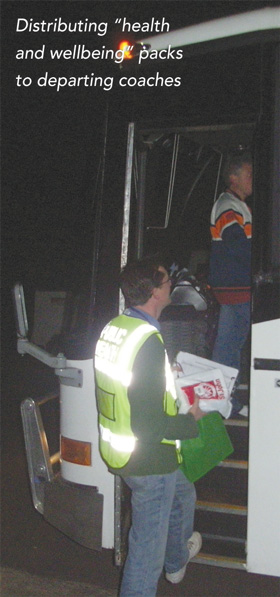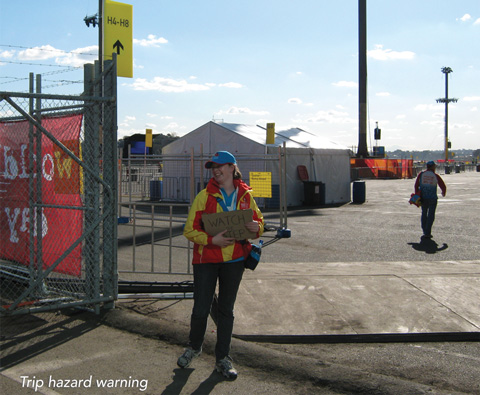World Youth Day (WYD) 2008 was a mass gathering of Catholic youth held over several days in July 2008 in Sydney. Festivities commenced with gatherings across Australia during a cultural exchange event called Days in the Diocese. Following this, young people from around the world converged on Sydney. About 100 000 individuals stayed in simple accommodation, such as school halls, around the greater Sydney metropolitan area. At the end of the week, an outdoor Evening Vigil with over 200 000 participants preceded the Final Mass, which was attended by about 400 000 people.1
NSW public health service workers drew on their own experience, gained from preparing for other mass gatherings, and on the experience of public health services of other countries that had hosted WYD events,2,3 to consider risks to the health of participants and the community during WYD 2008. Key risks identified were communicable disease outbreaks (due to endemic local diseases such as influenza, and the possibility of imported diseases not seen in Australia) and environmental health issues (particularly considering the temporary and basic nature of much of the mass accommodation). The need for pre- and intra-event health promotion messages was identified, including ensuring that participants were aware the event was taking place in the southern hemisphere winter, unlike previous WYDs (which took place in the northern hemisphere summer).
The command, control and coordination structures replicated those in the NSW Health disaster plan, Healthplan.4 A Public Health Emergency Operations Centre (PHEOC) was established, with links to the Health Services Disaster Control Centre (HSDCC; which coordinated the whole-of-health response and liaised with event organisers and other emergency response agencies) via a public health liaison officer at the HSDCC. Protocols and procedures for the PHEOC accorded with the Australasian Inter-service Incident Management System (AIIMS).5
NetEpi,6 an Internet-based public health outbreak management software program, was used to monitor presentations of conditions of interest across the onsite medical units, and by NSW public health units in the field. A password-protected interactive website (“wiki”) was established to post updated protocols and documents in the planning and response phases, and to provide situation reports to the public health community. A fleet of laptop computers with multiple modes of Internet connectivity were purchased to provide flexible online response capacity across field sites.
Extra surveillance staff were sourced from the NSW Public Health Officer Training Program and from the Masters of Applied Epidemiology program at the Australian National University. Environmental health officers (EHOs) were recruited from public health units across NSW, and staff from public health laboratories were requested to increase their alert level.
Public health emergency planners and practitioners have a key role in both mass gatherings and emergency response. Planned mass-gathering events are an ideal time to test preparedness and response and to build relationships with clinical emergency response personnel, as well as personnel from other response agencies. The planning and response for WYD 2008 has increased public health response capacity, allowed better understanding of some of the challenges that will occur with other emergency responses, and promoted the refinement of plans — blessings in disguise.

- Jan Fizzell1
- Paul K Armstrong2
- Biopreparedness Unit, NSW Department of Health, Sydney, NSW.
WYD 2008 was a large undertaking that involved much of the NSW Health public health community. The NSW Health Public Health Working Party for WYD provided guidance for the project coordinator. The NSW Health Counter Disaster Unit coordinated meetings of the Working Party and provided valuable liaison with event organisers and managed the whole-of-health planning team. The NSW Health Centre for Epidemiology and Research provided NetEpi and the interactive website.
None identified.
- 1. WYD 2008. Final statistics. Updated 21 Jul 2008. http://www.wyd2008.org/index.php/en/about_wyd08/final_statistics (accessed Nov 2008).
- 2. Milsten AM, Maguire BJ, Bissell RA, Seaman KG. Mass-gathering medical care: a review of the literature. Prehospital Disaster Med 2002; 17: 151-162.
- 3. Bassil KL, Henry B, Rea E, et al. Public health surveillance for World Youth Day. Toronto, Canada, 2002. MMWR Morb Mortal Wkly Rep 2005; 54 Suppl: 183.
- 4. Counter Disaster Unit, NSW Health. Healthplan. Sydney: NSW Health, 2005. (Policy directive no. PD2005_631.) http://www.health.nsw.gov.au/policies/PD/2005/PD2005_631.html (accessed Nov 2008).
- 5. Australasian Fire Authorities Council. Australasian Inter-service Incident Management System (AIIMS) manual. 3rd ed. Melbourne: Australasian Fire Authorities Council, 1994.
- 6. NSW Health Centre for Epidemiology and Research. NetEpi [website]. http://netepi.sourceforge.net/ (accessed Nov 2008).








Abstract